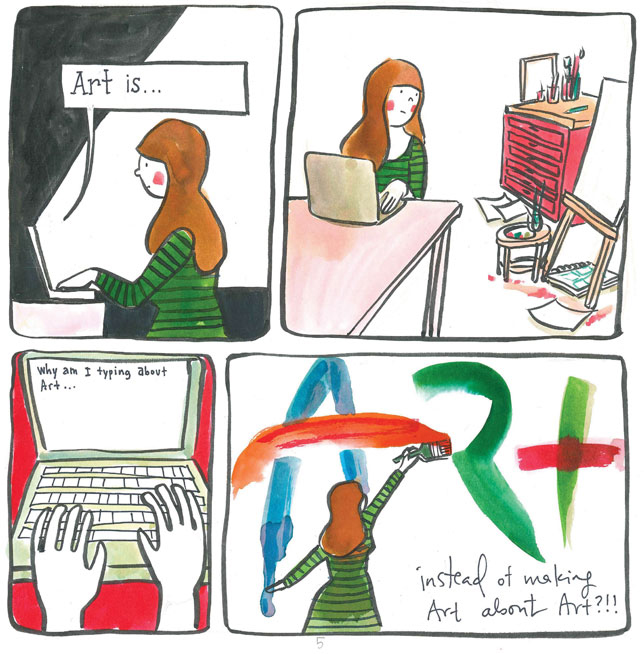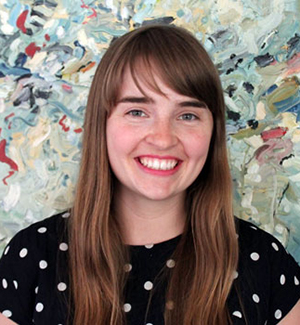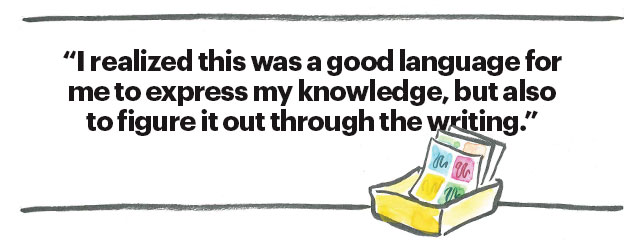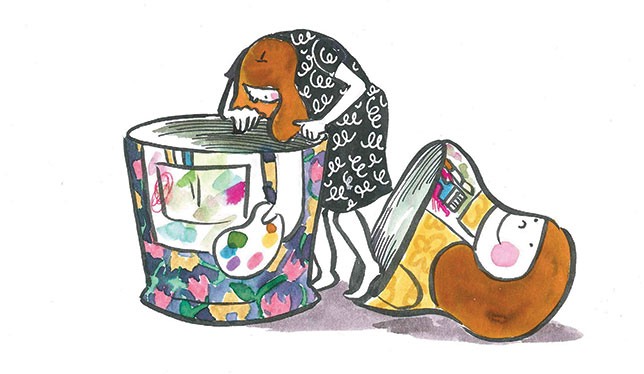Editor’s note: this is the fourth of an occasional series, People to Know, profiling notable people working in Canada’s higher education community. Follow the hashtag #peopletoknow.
Any optimist will tell you that pedagogy in Canada is shifting. Scholarly discourse in several fields is tending towards critical self-reflection, making space for important new modes of knowledge-production in universities. Meghan Parker, who in late 2017 earned her master’s degree in art education from Simon Fraser University, shares this outlook. She would know: her thesis, which considers modes of “unconventional” scholarship and how these might shape education, comprises a 268-page graphic novel. The work is autobiographical, and every single page has been illustrated and written by her own hand.
The medium was a natural choice for Ms. Parker, who found in the comic panel a new language extremely well-suited to her preferred modes of inquiry and expression. This approach grew out of a class assignment from professor Lynn Fels (who would go on to be one of her supervisors): Ms. Parker began drawing images and pairing them with quotes from the week’s course readings. “[I realized] this was actually a good way to express the questions I [was] thinking about,” she says. “It kind of evolved from there once I realized this was a good language for me to express my knowledge, but also to figure it out through the writing.” This question of artistic inquiry is central to her thesis. “Why am I typing about art,” one panel reads, “instead of making Art about Art?!!”

Ms. Parker has been teaching at a school in Greater Vancouver since she started her master’s, but she didn’t always know she wanted to teach. After finishing a bachelor’s degree at Emily Carr University of Art + Design, she says she realized that ““what I missed most was the studio … and being around people who were making things.” So she turned toward other places she could apply her talents – places like schools. “I’ve always loved working with young people,” she says, “so at one point I realized I wasn’t going to be an isolated artist. I figured, ‘Hey, teaching looks kind of interesting!’” This year, Ms. Parker taught art classes for Grades 8, and 10 to 12. And when she presented her thesis, she had one of her students play an accompaniment on the ukulele.
 Supported by supervisors Dr. Fels and SFU faculty member Michael Ling, Ms. Parker constructed her thesis project as one that is non-linear, that celebrates collaboration between artist-scholar and reader. Her thesis is one of the first submitted in Canada to weave complex and nuanced theoretical positions throughout hand-illustrated panels.
Supported by supervisors Dr. Fels and SFU faculty member Michael Ling, Ms. Parker constructed her thesis project as one that is non-linear, that celebrates collaboration between artist-scholar and reader. Her thesis is one of the first submitted in Canada to weave complex and nuanced theoretical positions throughout hand-illustrated panels.
The work is structured in seven sections according to the seven elements of art, which are frequently used to teach brand new artists the basics of rendering: line, colour, form, texture, shape, space and value. In each section, Ms. Parker engages in a close examination of her teaching and artistic practices. It is Ms. Parker herself, drawn into most panels in the graphic novel, who guides the reader through, elucidating an embodied and performative inquiry – a kind of scholarship that is executed by thinking, feeling and doing. “To talk about teaching like it’s not about who you are, that’s like, get a grip,” she laughs. “It is all about relationships, and to understand those relationships, to understand what you’re teaching and why you’re teaching, I think you really need to reflect on who you are and what your values are. So it kind of seemed obvious [to draw myself into the thesis].”

The form and content of the thesis are inextricable – the graphic novel itself demonstrates what it could mean to engage drawing as a scholarly act while pushing the boundaries which have limited our conceptions of what should be recognized as scholarship. “The thesis honours her work as an arts educator,” Dr. Fels says: Ms. Parker knows that not all students learn the same way, and her thesis embodies her position as an advocate for expanding our view of the forms scholarship can take.
The art educator says her experience creating and presenting her thesis project was overwhelmingly positive – save for a few disrespectful tweets like “So next, all we’ll have to do is a kindergarten hand paint and they’ll grant us a master’s degree?” While meant to be cruel, the comment illuminates a relevant point: it is precisely the question of scholars and young people alike conducting scholarly inquiry through drawing that concerns Ms. Parker’s research and goals. She believes that people, especially young people, should have the option to be educated through embodied inquiry, should be equipped with a critical mode of visual literacy, and should feel encouraged to learn in this way. Ms. Parker’s work and its warm reception at SFU attests not only to the value of the work, but the remarkable potential of drawing scholarship.

Nick Sousanis’ Unflattening did this already…his was the first AFAIK to do a dissertation as a comic.
Would have been nice to see this brought into a more nuanced discussion of drawing as academic practice.
I think you misconstrue the point of UA, which is not to bring about nuanced discussions (note the heavy censoring of comments) but rather to enable the self-promotion of trendy individuals, career coaches, and the like.
This sounds like a great thesis project, an obvious application of interdisciplinary methods and insights to advance the field of art education in schools. Having taught a Media-Communications course in the Comic Arts at Trinity Western University, I can testify to the lack awareness of many academics about the potential use of sequential art in teaching, particularly in creative or reflective assignments, or awareness of the wider world of independent comics/graphic novels which includes Watchmen (included in the top 100 novels according to Time), Maus (Pulitzer Prize, 1989) and immigration/identity narratives (American Born Chinese; We did the Best We Could do). Kudos to Ms. Parker and her thesis committee at SFU.
As a Masters student myself who is a passionate artist I am so very happy to see the success of Ms Parker’s thesis and the way it was presented. As I am also a Masters student who is one of those students who does not learn the same way I am so proud that she has been able to present her views on art in a way that other students who have challenges would understand her ideas.
We need to be able to provide more diverse and “out of the box” thinking ways to present Master’s thesis work to the educational community. Congratulations Ms. Parker from one who understands and approves whole heartily.
It’s impossible to judge without seeing the entire work (will it be made available?). The promise of the headline is that art is recognized as scholarship. This is tantalizing, but whether it’s realized doesn’t depend on the scholar’s preferred method of learning. The criteria should be: in what sense is the chosen medium an intellectual discipline, does the work build on previous theory and practice and advance both, and does it have characteristics that make it inexpressible in any other medium? I imagine the answer is yes in each case but it would be good to see how that works. Finally it seems that the work is both narrative and partly executed in written text. This makes it a story – one that can’t be interpreted without reading and attention to the interplay between text and illustration. Evaluation components might therefore include the choice of words, economy of language and overall effectiveness of the written element – as it should be with a pure-text piece of scholarship.
Paul,
The entire work is available for download at the link provided in the story. Here’s the link again, in case you missed it: http://summit.sfu.ca/item/17806
Léo Charbonneau, Editor